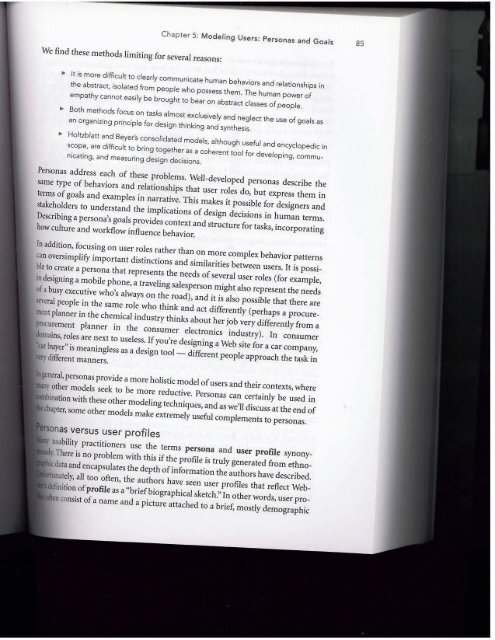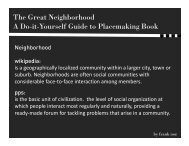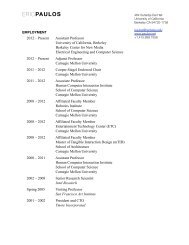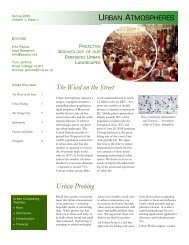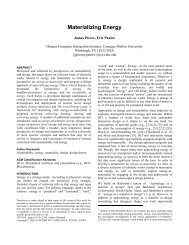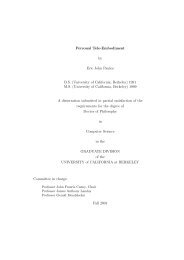Chapter 5: Modeling Users: Personas and Goals
Chapter 5: Modeling Users: Personas and Goals
Chapter 5: Modeling Users: Personas and Goals
Create successful ePaper yourself
Turn your PDF publications into a flip-book with our unique Google optimized e-Paper software.
We find these methods limiting for several reasons:<br />
<strong>Chapter</strong> 5: <strong>Modeling</strong> <strong>Users</strong>: <strong>Personas</strong> <strong>and</strong> <strong>Goals</strong> 85<br />
.. It is more difficult to clearly communicate human behaviors <strong>and</strong> relationships in<br />
the abstract, isOlated from people who possess them. The human power of<br />
empathy cannot easily be brought to bear on abstract classes of people.<br />
.. Both methods focus on tasks almost exclusively <strong>and</strong> neglect the use of goals as<br />
an organizing principle for design thinking <strong>and</strong> synthesis.<br />
.. Holtzblatt <strong>and</strong> Beyer's consolidated models, although useful <strong>and</strong> encyclopedic in<br />
SCOpe, are difficult to bring together as a coherent tool for developing, commu_<br />
nicating, <strong>and</strong> measuring design decisions.<br />
<strong>Personas</strong> address each of these problems. WeU~developed personas describe the<br />
same type of behaviors <strong>and</strong> relationships that user roles do, but express them in<br />
terms of goals <strong>and</strong> examples in narrative. This makes it possible for designers <strong>and</strong><br />
stakeholders to underst<strong>and</strong> the implications of design decisions in human terms.<br />
Describing a persona's goals provides context <strong>and</strong> structure for tasks, incorporating<br />
how culture <strong>and</strong> workflow influence behavior.<br />
In addition, focusing on user roles rather than on more complex behavior patterns<br />
(an oversimplify important distinctions <strong>and</strong> similarities between users. It is possible<br />
10 create a persona that represents the needs ofseveral user roles (for example,<br />
in designing a mobile phone, a traveling salesperson might also represent the needs<br />
o( a busy executive who's always On the road), <strong>and</strong> it is also possible that there are<br />
several people in the same role who think <strong>and</strong> act differently (perhaps a procurement<br />
planner in the chemical industry thinks about her job very differently from a<br />
procurement planner in the consumer electronics industry). In consumer<br />
domains, roles are next to useless. Ifyou're designing a Web site for a car company,<br />
Cir buyer" is meaningless as a design tool - different people approach the task in<br />
different manners.<br />
generaJ, personas provide a more holistic model ofusers <strong>and</strong> their contexts, where<br />
yother models seek to be more reductive. <strong>Personas</strong> can certainly be used in<br />
bination with these other modeling techniques, <strong>and</strong> as we'll discuss at the end of<br />
chapter, some other models make extremely useful complements to personas.<br />
onas versus user profiles<br />
usability practitioners use the terms persona <strong>and</strong> user profile synony<br />
"There is no problem with this if the profLie is truly generated from ethno~<br />
'( data <strong>and</strong> encapsulates the depth ofinformation the authors have described.<br />
nalely, all too often, the authors have seen user profiles that reflect Webfinition<br />
ofprofile as a "briefbiographical sketch." In other words, user pronconsist<br />
of a name <strong>and</strong> a picture attached to a brief, mostly demographic


